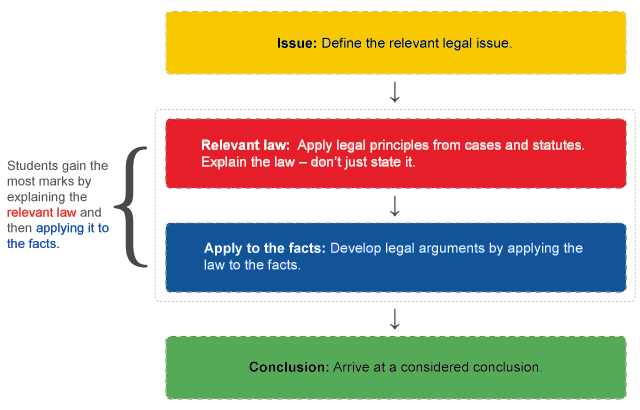Below we cover plain English writing, writing for legal problems using the IRAC problem solving method and using authoritative versions of primary materials.
Materials to assist you:
(Found in the Australian Encyclopaedia of Forms & Precedents, Lexis Advance)
| law or lawyer (can be searched collectively using law*) | write or writing |
| legal | grammar |
Before you start writing your assignment, it is important you are clear about the assignment type. You may be asked to write an essay, a legal memorandum or case note. It is useful to look at examples of these writing styles to inform your own writing.
Examples can be found in the Australian Encyclopaedia of Forms & Precedents.
You will also need to consider what your assignment itself has asked of you, for example do you need to make a legal argument, present a critical analysis of the law or is it a discussion of the law? Each of these requirements has a distinct structure that your lecturer will expect to see.
Most assignment and exam assessment tasks in law require you to analyse and write answers to problem questions. We recommend that you follow the IRAC method of legal argument, specifically, that you strucute yor response to contain the following elements:

Below is an example of a discussion of a single legal issue. You will note that the author defines the legal issue, states the relevant law, applies the law to the facts before stating their conclusion.
The introduction to your problem essay should state the legal problem (the legal action or charge) and the related legal issues that you will identify and discuss in your paper.
Some common introductory phrases are:
The conclusion is a very important part of your paper or exam response. As you use IRAC to discuss each legal issue identified in the problem question, you will come to a number of conclusions. By the end of your essay, you will need to draw all the conclusions you have made for each legal issue into one general 'end of paper' conclusion.
Some common phrases for conclusions are:
All Australian jurisdictions have a set of official or 'authorised' law reports. Judgments published in authorised reports are checked and approved by Councils of Law Reporting. Whether citing such cases in your assignment or using in court, it is important to always use the authorised citation of the case where possible. The University of Melbourne has produced an excellent Library Subject Guide to assist you located authorised cases.
You can check whether you have the authorised version by looking through our list of Authorised Reports.

Online compilations of Commonwealth legislation are authoritative and can be used in legal proceedings, as outlined in the Evidence Amendment Act (Cth). An authoritative online compilation from the Federal Register of Legislation will always be in Adobe Acrobat (PDF) format and will display the symbol  .
.
In Tasmania, the the online compilation of an act is not always recognised as authoritative. It is likely that in future, all compilations accessed from the Tasmanian Legislation website will be authoritative. If the online version is not authorised, the Paper Open Access Repository is considered the official authorised version of Tasmanian legislation, and it is this version which should be taken to court. Up to date paper statutes are held the law law library of Tasmania.
To determine if an online compilation from Tasmanian Legislation is authorised, look for the "Authorised Versions" button, and use the drop down to access the pdf.

The pdf will be annotated with an authorisation like this:


